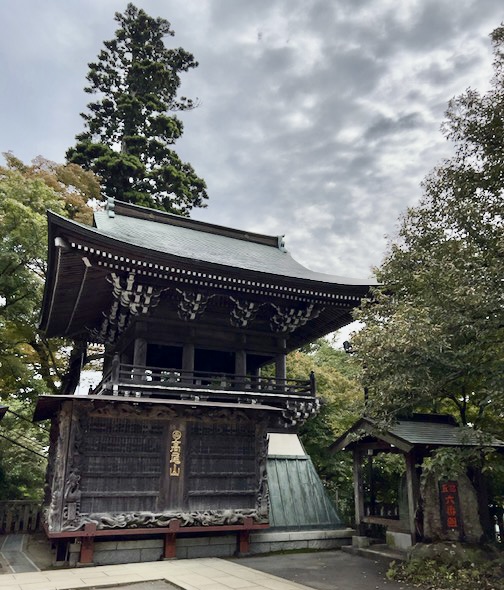This is the shoro belfry in the precincts of Yakuo-in Temple in Mt. Takao, which is a reconstruction of the old building that was destroyed by one of the powerful typhoons in 1966.
The reconstruction of the current building was completed in 1974.
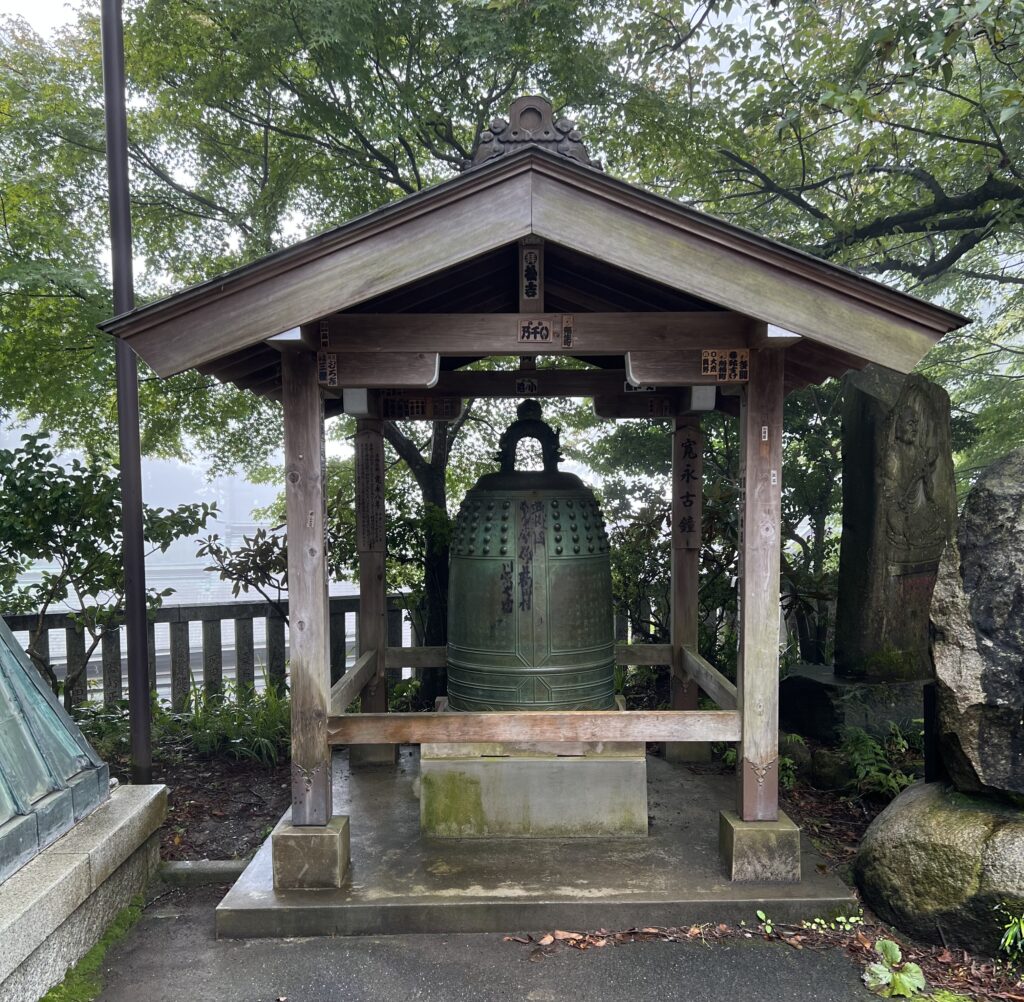
The old temple bell preserved next to the belfry is, however, said to have been cast in the early 17th century.
Having said that, the temple bell in Japan has a much longer history dating back to the Asuka period (592 – 710).
The temple bell at Kanzeon-ji Temple in the city of Dazaifu in Fukuoka prefecture is arguably the oldest surviving temple bell in Japan cast in circa 682.
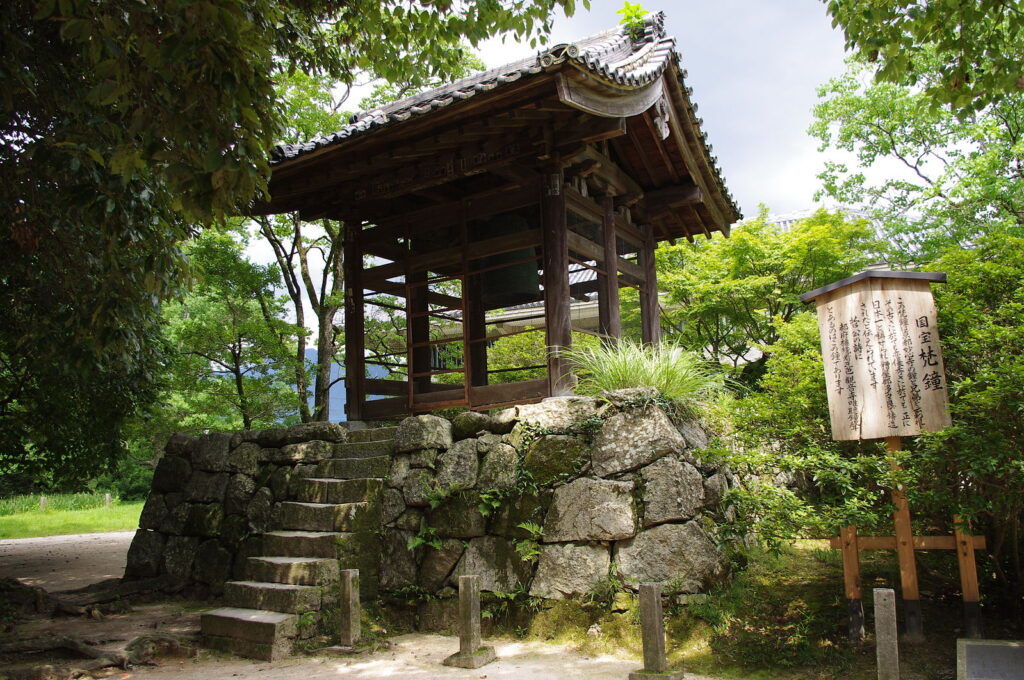
Although Buddhism is a religion that originated in ancient India, the origin of Japanese temple bell is hardly found in India but in ancient Chinese bronze wares.
I remember that when our family went on a sight-seeing trip to China in 2004 we visited the Shanghai Museum where we can appreciate a great collection of bronze wares in ancient China some of which are surprisingly said to have been made much earlier than the birth of Shakyamuni (463 BC).
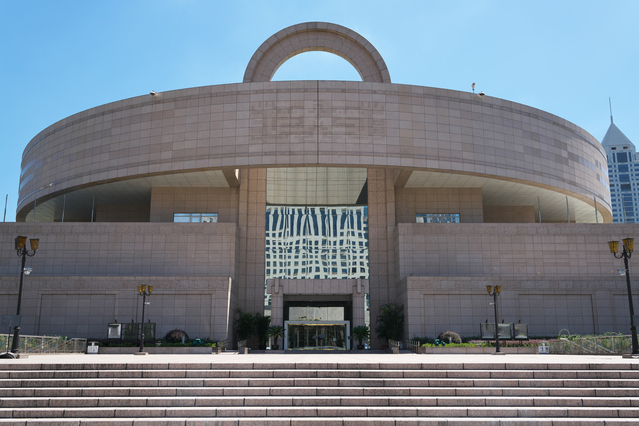
In Japan, a temple bell used to be employed in sounding the hours of the day in the Edo period, but now its main use is on New Year’s Eve when it is rung 108 times.
It is said that on New Year’s Eve, the sound of the bell rings out the old year and rings in the New Year.
The 108 sounds of the temple bell are also supposed to release people from their 108 worldly sins or desires.
Some of you may wonder why they are 108.
In Buddhism, it is explained that our worldly sins or desires all arise by recognizing a recognition object such as a sight, a sound, a smell, a taste, a physical feeling, and a mental presentation through our six (6) senses which include the sense of sight (eyes), the sense of hearing (ears), the sense of smell (nose), the sense of taste (tongue), the sense of touch (body) and the sense of reasoning (mind).
Then, these six (6) senses are classified as three (3) types of sense, the sense to feel good, the sense to feel bad, the sense to feel neutral, thus producing eighteen (18) kinds of feeling in total; then each of the eighteen (18) kinds of feeling has two (2) types, pure and impure, making thirty-six (36) kinds of feeling, which means that we, ordinary people, end up having thirty-six (36) worldly sins or desires.
The objective of Buddhist religious training is to be free from these thirty-six (36) worldly sins or desires in relation to the previous life, the current life and the future life.
So, these thirty-six (36) worldly sins or desires are multiplied by three (3) representing the three (3) temporal worlds to make 108.
Some of you may not be patient enough to wait for the temple bells to be rung 108 times on New Year’s Eve.
Luckily, for visitors to Mt. Takao there will be an alternative service to achieve the release from your 108 worldly sins or desires much more easily and quickly.
The following is a photo of one of the facilities called Rokkon Shojo Ishi Guruma, literally, Six Sense Purification Stone Wheel.

It is said that every time you rotate this type of stone wheel once one of your 108 worldly sins or desires will disappear.
You should be able to find as many as eighteen (18) similar stone wheels across the mountain.
So, we should be able to be free from all the 108 worldly sins or desires by rotating all the eighteen (18) stone wheels six (6) times for each without undergoing any rigorous religious training or listening to a temple bell rung 108 times on New Year’s Eve.
Even if you should not be able to find all the eighteen (18) Rokkon Shojo Ishi Guruma there, you can achieve the same objective alternatively by rotating the following big stone wheel located close to Shitenno-mon (the Gate of Heavenly Kings) of Yakuo-in Temple eighteen (18) times.
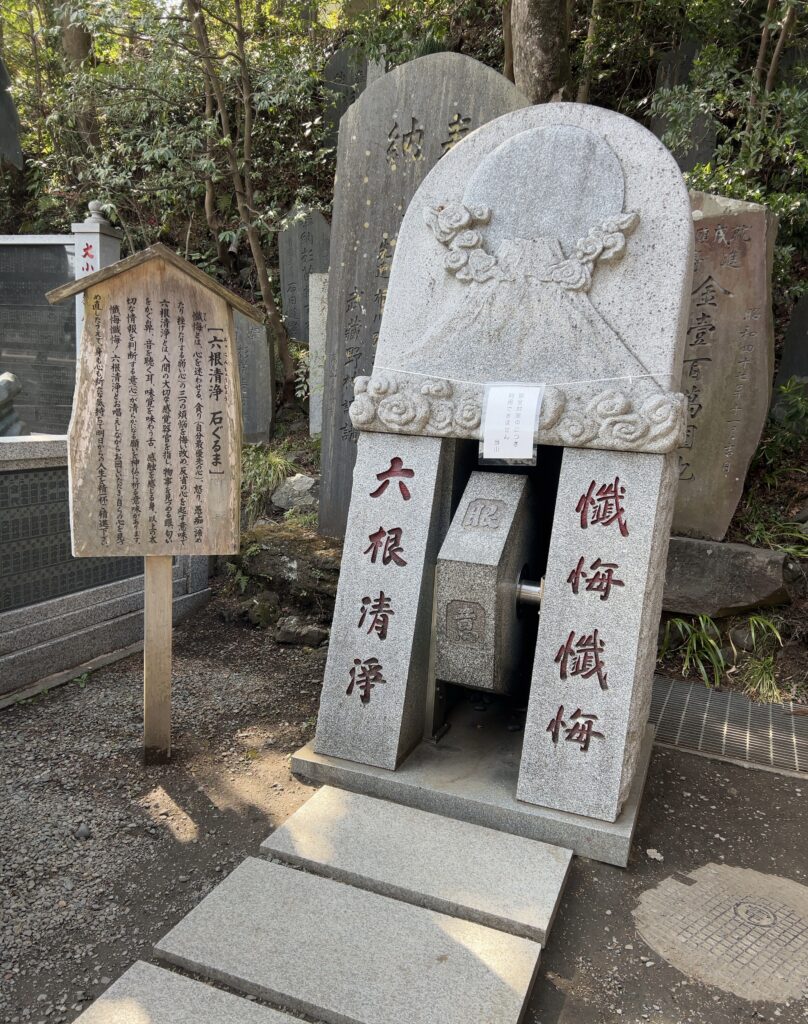
In fact, this big stone wheel is a sort of the headquarters of Rokkon Shojo Ishi Guruma and is believed to purify all the six (6) senses of yours every time you rotate this stone wheel just once.
Those who believe shall be saved.
It is understood that the tradition of ringing temple bells on New Year’s Eve was introduced to Japan in the 13th century by Chinese Zen monks who moved to Japan as refugees when the Song dynasty (960 – 1279) was being invaded by the Mongol Empire.
So, we can reasonably assume that Zen temples represented by Kencho-ji Temple in Kamakura should be some of the pioneers of this tradition.
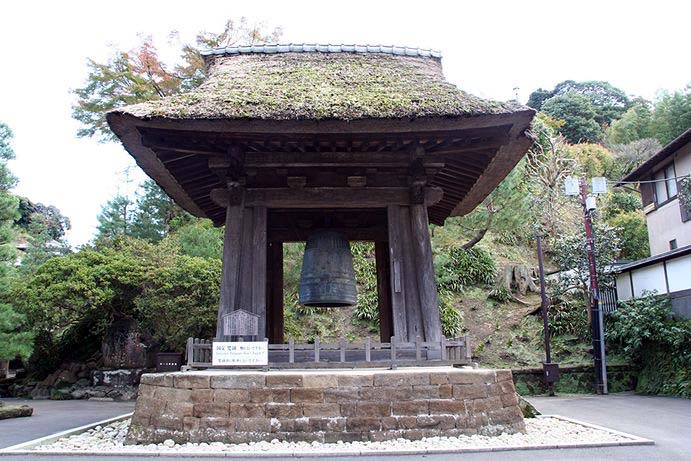
The tradition of ringing the temple bells on New Year’s Eve had gradually been spreading nationwide in the Muromachi period (1336 – 1573).
It is said that with the advent of the Edo period (1603 – 1868), the temple bells came to be rung three (3) times a day at 6:00 am, noon and 6:00 pm at first.
Then, from the reign of the second shogun, Tokugawa Hidetada onwards, the temple bells were rung twelve (12) times a day, every two (2) hours until the Meiji Restoration.
Generally speaking, when I explain a temple bell to foreign tourists, I would just focus on the event on New Year’s Eve.
Having said that, at Yakuo-in Temple in Mt. Takao, the temple bell is rung three (3) times a day at 6:00 am, at noon and at 6:00 pm in addition to the tradition of ringing the temple bells on New Year’s Eve.
I suspect that this may be because the number of worldly sins or desires of visitors to Mt. Takao is considered marginally larger than the average.
I have also found that Yakuo-in Temple’s bell is sounded six (6) times both at 6:00 am and 6:00 pm and nine (9) times at noon.
Why not twelve (12) times instead of nine (9) times at noon?
Under the old Japanese system of keeping time, the midnight which is the starting point of the day was referred to as 9 o’clock and every two (2) hours thereafter, 8 o’clock, 7 o’clock, 6 o’clock, 5 o’clock, 4 o’clock and at noon again back to 9 o’clock.
Likewise, every two (2) hours in the afternoon, 8 o’clock, 7 o’clock, 6 o’clock, 5 o’clock, 4 o’clock and at midnight again back to 9 o’clock.
This system comes from China where the number nine (9) is considered to be an auspicious number as the pronunciation of nine (9) (jiu) resembles the pronunciation of eternal (jiu) in Chinese.
Under this system, nine (9) is treated as one (1) unit.
So, starting with 9, then, 18, 27, 36, 45 and 54 for a half day.
But, the digit in the tens place is ignored.
Thus, the bottom line is 9, 8, 7, 6, 5 and 4 in order of earlier time.
As I mentioned in the post titled How should we make a prayer at Izuna Gongen-do Hall in Mt. Takao?, nine (9) is an unlucky number in Japanese in that nine (9) is pronounced ku in Japanese and ku could mean sufferings in Japanese.
In fact, in the context of counting the number of sounds of temple bells, Japanese people used the pronunciation of kokonotsu for nine (9) for superstition or otherwise in those days.
According to the Nihon Shoki (The Chronicles of Japan), which is the 2nd oldest book of classical Japanese history written in Chinese, the 38th Emperor Tenchi placed a water clock called rokoku introduced from China in the Imperial Palace called Omi Otsu no Miya in the present-day Otsu, Shiga prefecture on June 10th, 671.
To commemorate the establishment of Japan’s first water clock, the 10th of June is designated as Time Day on which the Water Clock Festival is held at Omi Shrine in Otsu, Shiga prefecture as an annual event.
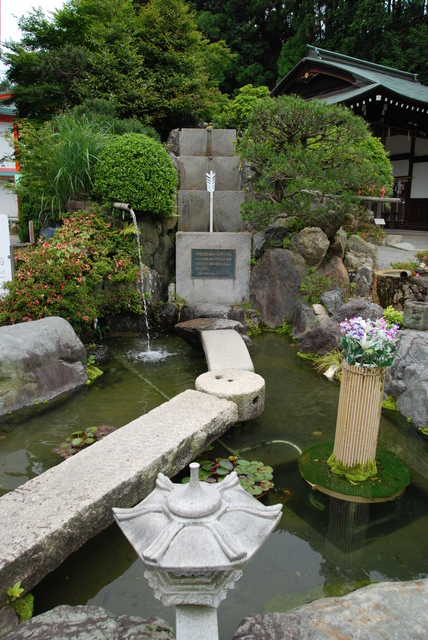
So, the history of clock in Japan appears to be as long as that of the temple bell.
It is understood that a Western style mechanical clock, which was designed to work according to the fixed time system, was first brought to Japan in 1551 when Francis Xavier, a missionary of the Catholic church and one of the founding members of the Society of Jesus, presented it to Ouchi Yoshitaka, one of the Christian feudal lords based in the present-day Yamaguchi prefecture.
Then, Japanese people modified the same type of Western style mechanical clocks to adapt it to the seasonal time system that is a way of measuring time, by equally dividing daytime and nighttime, as determined by the times at which dawn and dusk occur, which had been applied throughout the Edo period or until the Meiji Restoration.
In the Edo period, the temple bells were rung according to the hours told by the modified mechanical clocks called wadokei, literally, Japanese clocks.

Wadokei were so expensive that only the Tokugawa shogun, feudal lords and wealthy merchants, etc. could afford them.
So, before the Meiji Restoration, Japanese people may have been considered careless about being on time from the perspective of foreigners from the countries where the fixed time system was adopted.
As time goes by, recently Japanese people appear to have successfully established the reputation that they are more punctual and that the public transportation system in Japan runs like clockwork among visitors from overseas.
Having that that, I’m afraid that Japanese business persons and their employers have not been very punctual when it comes to the end of working hours.
